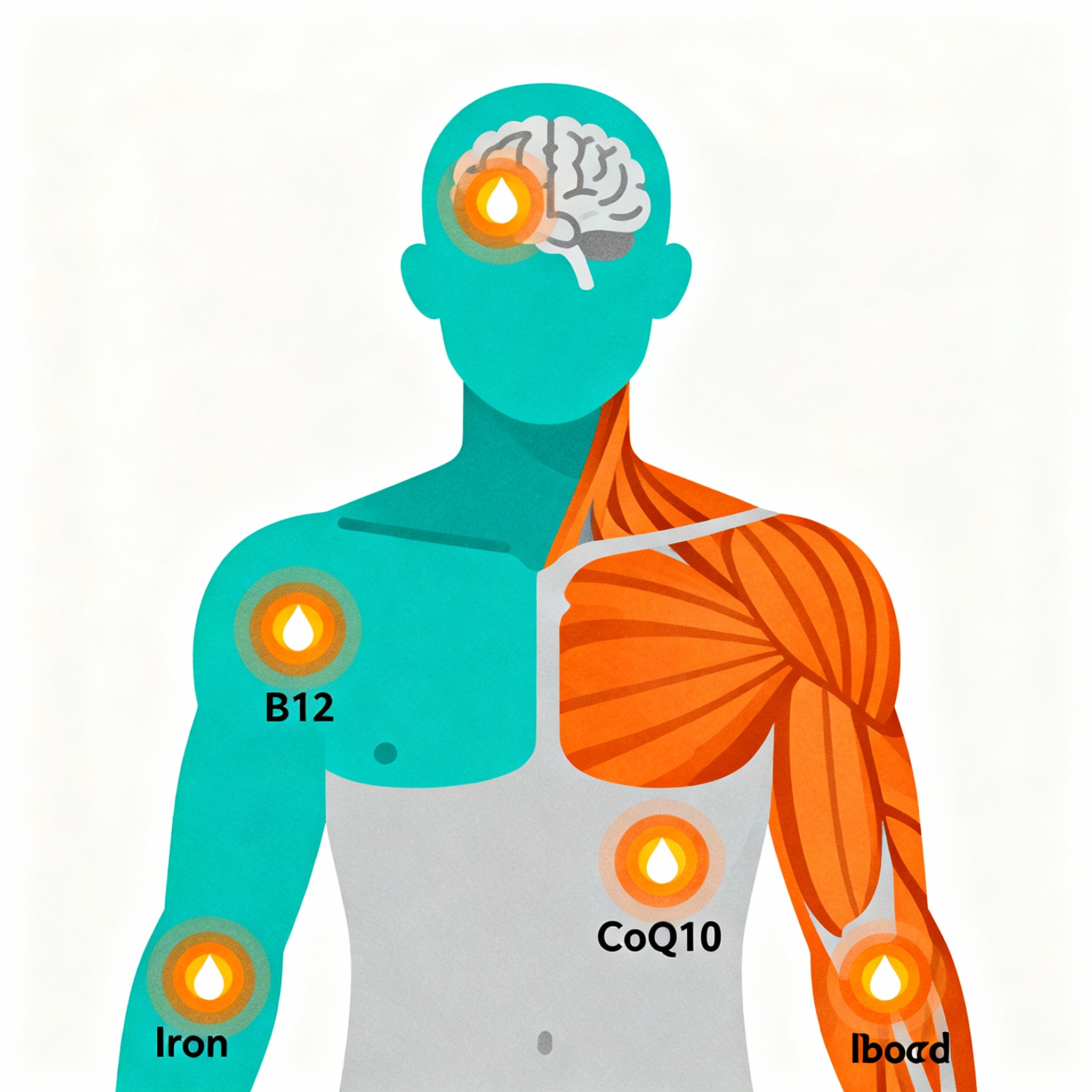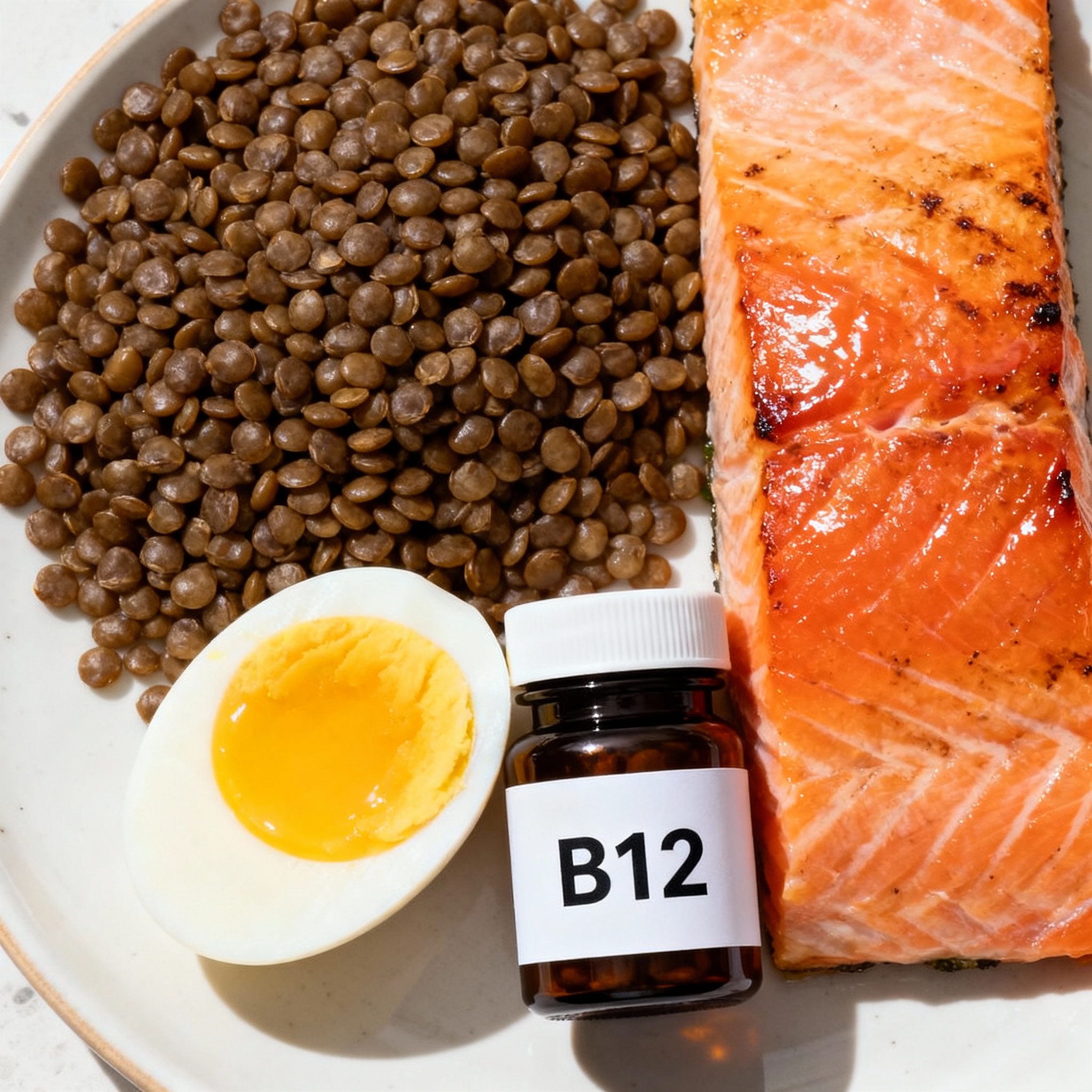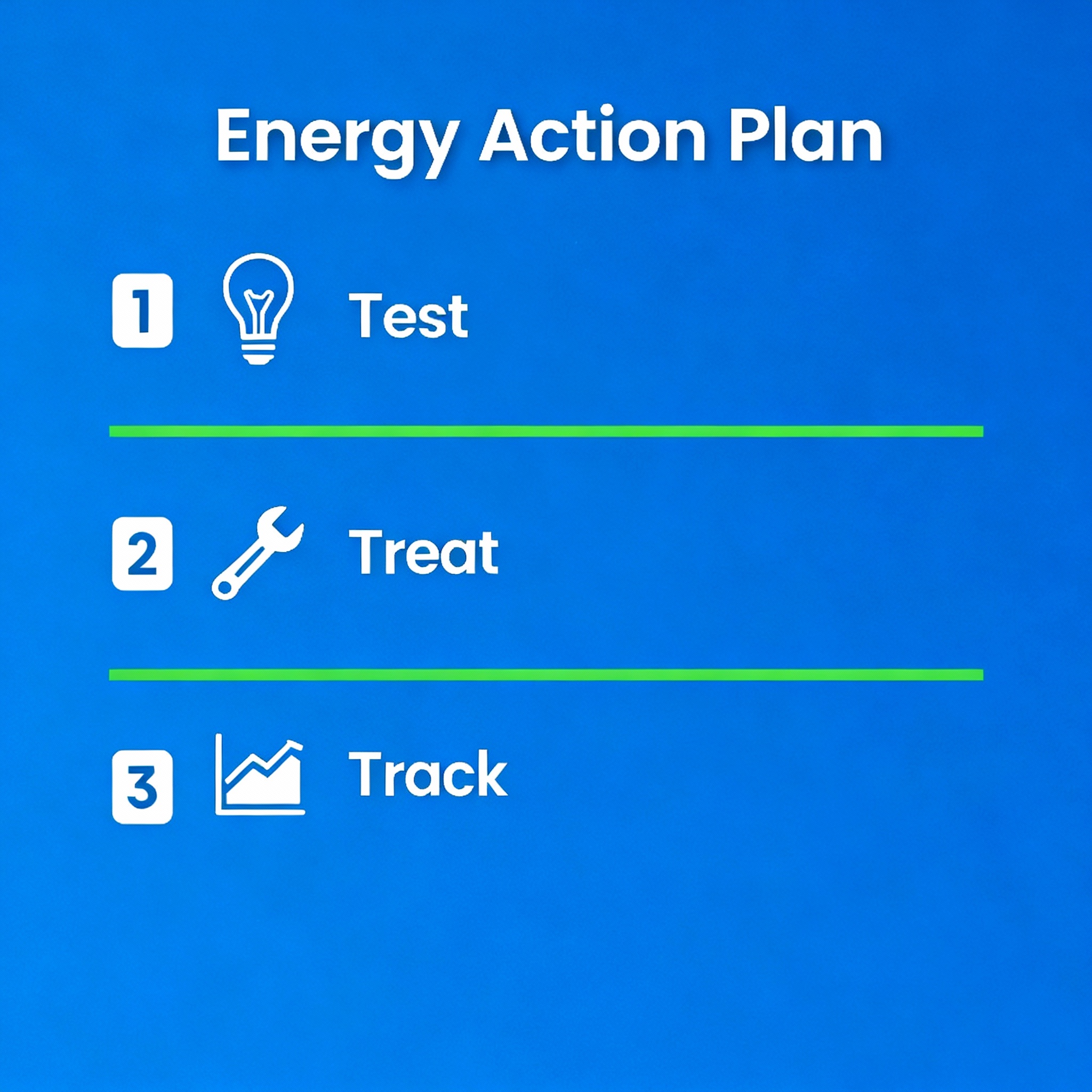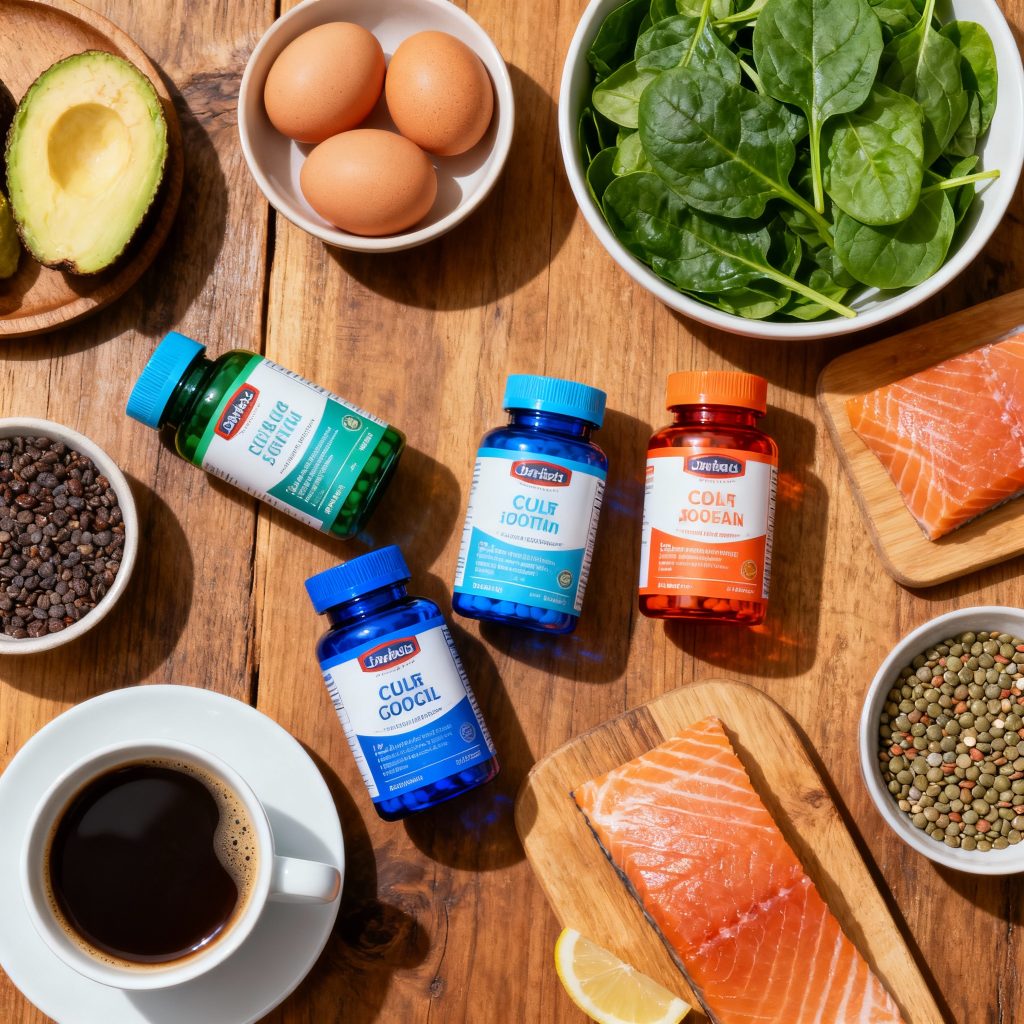Feeling drained midafternoon, or simply frustrated by low energy that won’t quit? You’re not alone, and there are practical, evidence-informed options you can try before assuming caffeine is the only answer. In this listicle you’ll find smart, doctor-backed vitamin options, how they help, safe dose ranges, who should consider them, and simple food sources.
In the paragraphs that follow I’ll bold one clear search phrase so you can spot it quickly. Here’s the thing, supplements aren’t magic, but the right micronutrients can make a big difference when deficiency or greater need is the cause. Below are the top picks to consider, plus quick action steps and safety tips.

Why vitamins help with low energy
Low energy often comes from one of three places: not enough sleep, too little movement or exercise, or a physiological shortfall like low iron or B12. Micronutrients are involved in energy production inside cells, oxygen transport, and nerve signaling. Correcting a deficiency can restore normal function and noticeably boost daily energy.
Here’s a practical list of the most useful vitamins and related nutrients for energy, ranked by how commonly they help and how strong the evidence is.
Best Vitamins for Energy Boost: Top 10
- Vitamin B12 (cobalamin)
- Why it helps: Vital for red blood cell production and nerve health, B12 deficiency causes fatigue and brain fog.
- Typical dose: 250–500 mcg daily for oral supplements is common; higher one-time injections or prescription dosing may be used when deficiency is diagnosed.
- Food sources: Fish, shellfish, beef, dairy, fortified cereals.
- Who benefits: Older adults, people on strict vegan diets, those with absorption issues.
- Safety notes: Generally safe, but have levels checked before high-dose therapy.
- Iron (and ferritin optimization)
- Why it helps: Iron is essential for hemoglobin, which carries oxygen. Low iron or low ferritin often presents as persistent tiredness.
- Typical dose: For supplementation, 30–65 mg elemental iron daily is typical until levels recover; dosing should follow blood tests.
- Food sources: Red meat, lentils, spinach, iron-fortified cereals, vitamin C helps absorption.
- Who benefits: Women with heavy periods, endurance athletes, people with diagnosed iron deficiency anemia.
- Safety notes: Excess iron can be harmful. Always confirm deficiency with blood work and follow a clinician’s plan.
- Vitamin D
- Why it helps: Low vitamin D is linked to fatigue and low mood in some people, and it supports muscle function and immune health.
- Typical dose: 1,000–2,000 IU daily for maintenance; higher prescription doses for deficiency.
- Food sources: Fatty fish, fortified dairy, sun exposure.
- Who benefits: People with limited sun exposure, older adults, those with very low measured levels.
- Safety notes: Blood testing guides dosing. Very high doses can cause toxicity.
- B-Complex (especially B6, B9, B12)
- Why it helps: B vitamins work together in cellular energy metabolism and nervous system function.
- Typical dose: Standard B-complex supplements provide daily amounts at or above recommended intakes; follow label guidance.
- Food sources: Whole grains, legumes, leafy greens, animal proteins.
- Who benefits: People with poor diets, high-stress lifestyles, or higher needs (pregnancy, heavy exercisers).
- Magnesium
- Why it helps: Magnesium participates in ATP production, the body’s energy currency, and supports muscle and nerve function.
- Typical dose: 200–400 mg daily (magnesium citrate or glycinate are well tolerated).
- Food sources: Nuts, seeds, whole grains, leafy greens.
- Who benefits: People with muscle cramps, poor sleep, or high caffeine/alcohol intake.
- Safety notes: High doses can cause diarrhea; kidney disease requires caution.
- Coenzyme Q10 (CoQ10)
- Why it helps: CoQ10 is critical for mitochondrial energy production and may help people on statins who experience fatigue.
- Typical dose: 100–200 mg daily.
- Food sources: Small amounts in oily fish, meat, whole grains.
- Who benefits: Older adults, people on cholesterol-lowering statins, anyone with suspected mitochondrial fatigue.
- Vitamin C
- Why it helps: Indirectly supports energy by helping iron absorption and reducing oxidative stress that can contribute to tiredness.
- Typical dose: 500–1,000 mg daily when needed; aim for food-first where possible.
- Food sources: Citrus, berries, peppers, broccoli.
- Creatine (not a vitamin, but energy-relevant)
- Why it helps: Supports short-term cellular energy and improves physical performance and cognition in some studies.
- Typical dose: 3–5 g daily after a short loading phase.
- Food sources: Red meat, fish.
- Who benefits: Those doing resistance training, older adults working to preserve muscle and strength.
- Folate (vitamin B9)
- Why it helps: Important for red blood cell production and energy metabolism. Folate deficiency can cause fatigue.
- Typical dose: 400 mcg daily as folic acid or methylfolate forms.
- Food sources: Leafy greens, beans, fortified grains.
- Who benefits: People with absorption issues, pregnancy, or certain genetic variations in folate metabolism.
- Riboflavin (vitamin B2)
- Why it helps: Plays a role in turning food into usable energy and supports healthy red blood cells.
- Typical dose: Often included in B-complex; supplemental doses vary.
- Food sources: Milk, eggs, lean meats, almonds.

How to choose the right supplement for you
- Start with testing: Get basic labs such as a complete blood count, ferritin, vitamin D, and B12 if low energy is persistent.
- Food-first approach: Try increasing nutrient-dense foods before relying on pills.
- Match the supplement to the deficiency: Iron for low ferritin, B12 for low levels, vitamin D supplementation when levels are low.
- Watch interactions: Some supplements affect medications or are unsafe in certain conditions. Discuss with your clinician.
Quick protocol you can try this month
- Book a basic lab panel including ferritin, B12, and vitamin D.
- If labs are low, follow clinician-guided supplementation rather than guessing.
- Add a daily multivitamin or B-complex if your diet is inconsistent, plus one targeted supplement based on bloodwork.
- Reassess energy after 6–8 weeks and repeat labs if needed.
Frequently asked questions
How fast will I feel more energetic after starting a vitamin?
Some people notice improvements within 1–2 weeks, especially with iron if deficiency is addressed. Others, like vitamin D or B12 corrections, may take 6–12 weeks depending on baseline levels and dosing.
Are there risks to taking multiple supplements together?
Yes, there can be — iron can cause stomach upset and is unsafe in excess, high vitamin D needs monitoring, and supplements can interact with medications. Always discuss combinations with a clinician.
Can caffeine replace vitamins for energy?
Caffeine gives a short-term alertness boost but does not correct nutritional deficiencies. Overreliance on stimulants may mask a treatable deficiency.
Should I take a multivitamin or targeted supplements?
A multivitamin is a reasonable baseline for many people with inconsistent diets. Targeted supplements are better when labs show a specific deficiency.
Are natural food sources better than pills?
Food-first is ideal because nutrients come with cofactors that aid absorption, but supplements are essential when dietary intake or absorption is inadequate.
Practical objections and answers
- "Supplements feel expensive" — Start with testing so you only buy what’s necessary. A short, targeted course often solves the problem.
- "I’ve tried vitamins before and saw no change" — Frequency, dose, absorption issues, or incorrect choice could be the reason. Labs and a clinician review help.
Next steps you can take right now
- If you want a quick primer on testing and practical next steps, check out this guide on the Marvlus blog to learn how to interpret basic labs and choose a supplement plan.
- Subscribe to concise weekly updates and research-backed explainers at the Marvlus newsletter for actionable tips and examples of what works.
Try it, then track it
Small, measurable changes are powerful. Pick one nutrient to investigate first based on symptoms and lab results. Track how you feel after 4 and 8 weeks, and adjust with your clinician.
Want help creating content like this for your audience?
Marvlus researches what your readers are searching for and writes SEO-friendly articles that rank and convert. Learn more about how Marvlus can help by visiting the blog and subscribing to the newsletter.
Improve your energy, responsibly
Addressing nutrient gaps is one of the most practical ways to improve daily energy. When done thoughtfully, it’s safe, often effective, and gives you a clear path forward.





